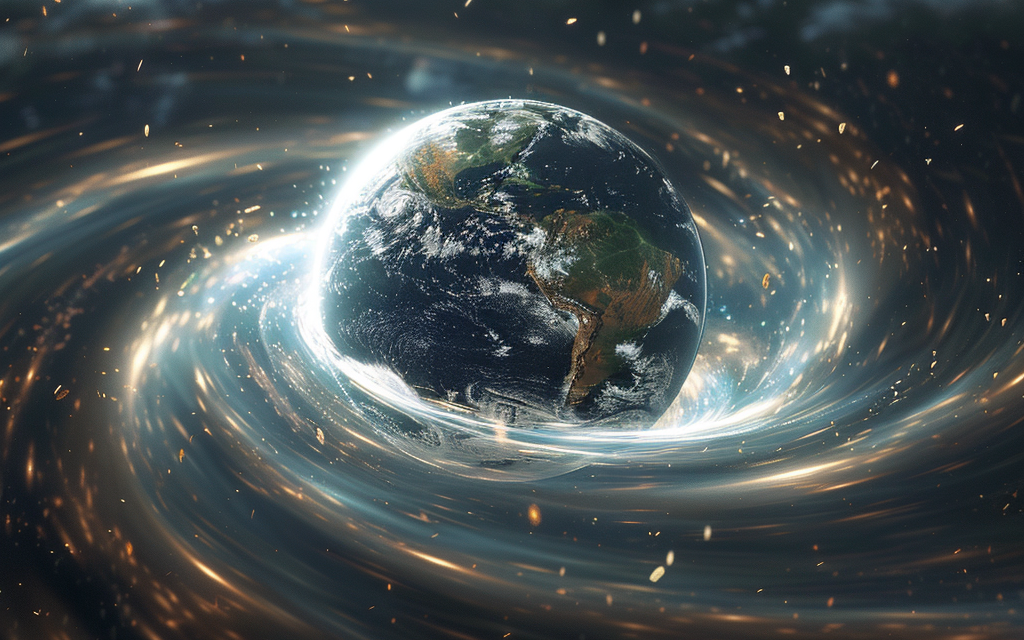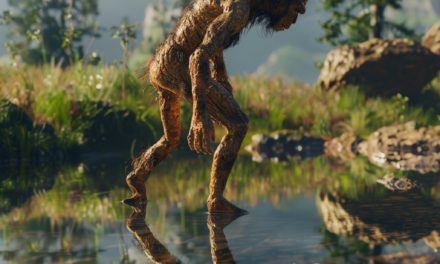Introduction
Gravity: it’s not just a force; it’s the reason your keys always end up on the floor. This invisible tether that holds the universe together has puzzled philosophers, scientists, and the person who invented the phrase, “What goes up must come down,” for centuries. From ancient musings to modern equations, the story of gravity’s discovery is a tale of apples, planets, and everything in between. Join us as we delve into the forces that quite literally shape our world.
Early Theories and Observations
Before the concept of gravity was ever formulated, humans across different civilizations noticed that things tended to fall towards the Earth. From the philosophical musings in ancient Greece to the scholarly inquiries in medieval India, the question of why objects fall was a universal puzzle. Aristotle, one of the most influential philosophers of all time, proposed that objects fall towards their natural place in the cosmos, with earthy materials seeking the center of the universe—our Earth. While his explanation didn’t hit the nail on the head regarding gravity, it propelled forward the notion that there must be some natural law at play, governing the motion of objects. This early speculation laid the groundwork for centuries of inquiry, setting the stage for the groundbreaking discoveries that would eventually unveil the mysteries of gravity.
The Galileo Galilei Breakthrough
Galileo Galilei, often heralded as the father of modern observational astronomy, took a critical step towards demystifying gravity. With his simple yet revolutionary experiments, including rolling balls down inclined planes and, according to legend, dropping two spheres of different masses from the Leaning Tower of Pisa, Galileo challenged the Aristotelian doctrine that heavier objects fall faster than lighter ones. His findings—that objects accelerate at the same rate regardless of their mass—shook the very foundations of physics and paved the way for a new understanding of the forces that govern the universe. Galileo’s work was not just about disproving outdated theories; it was about establishing a method of inquiry based on observation, experimentation, and mathematical analysis that remains the cornerstone of the scientific method today.
Johannes Kepler and Celestial Motion
While Galileo was revolutionizing the understanding of motion on Earth, Johannes Kepler was turning his gaze skyward, unraveling the secrets of celestial motion. Kepler’s formulation of the three laws of planetary motion marked a monumental leap in astronomy, illustrating that planets orbit the sun in ellipses rather than perfect circles, with varying speeds that are faster closer to the sun and slower when farther away. These laws suggested that the motion of celestial bodies was not arbitrary but followed precise mathematical principles. Kepler’s work built on the observations of Tycho Brahe and laid the essential groundwork for Newton’s later theory of gravitation, highlighting the interconnectedness of celestial phenomena and the force of gravity.
Sir Isaac Newton and the Universal Law of Gravitation
Sir Isaac Newton, standing on the shoulders of giants like Galileo and Kepler, synthesized the observations and theories of his predecessors into a comprehensive theory of gravitation. The apocryphal story of an apple falling on his head may oversimplify his genius, but it captures the essence of his discovery: gravity is a universal force that pulls objects toward each other. In his seminal work, Principia Mathematica, Newton mathematically described how the force of gravity decreases with distance and increases with mass, offering the first universal equation that applied to objects both on Earth and in the heavens. Newton’s law of universal gravitation was revolutionary, providing a unified explanation for the motion of apples and the orbit of moons and planets, and forever changing our understanding of the universe.
Einstein and the Theory of General Relativity
Albert Einstein radically transformed our understanding of gravity in the early 20th century with his theory of general relativity. Challenging the Newtonian view of gravity as a force acting at a distance, Einstein proposed that massive objects cause a curvature in space-time, and what we perceive as gravity is the motion of objects following the curved paths of this distorted space-time fabric. This theory not only explained existing anomalies, such as the precession of Mercury’s orbit, but also made bold predictions, including the bending of light by gravity and the existence of gravitational waves—predictions that have since been confirmed by experiments. Einstein’s work on gravity was as profound as it was poetic, painting a picture of a cosmos more strange and beautiful than we had ever imagined.
Modern Discoveries and Experiments
In the centuries following Einstein, scientists have continued to explore the nature of gravity, pushing the boundaries of our knowledge through ingenious experiments and observations. The confirmation of gravitational waves by LIGO in 2016, a century after Einstein predicted them, opened a new window onto the universe, allowing us to “hear” the ripples in space-time caused by cataclysmic events billions of light-years away. Researchers are now using gravity to probe the darkest secrets of the universe, from the nature of dark matter and dark energy to the behavior of gravity around black holes and in the early universe. These modern endeavors are not just expanding our understanding of gravity; they’re reshaping our understanding of the cosmos itself.
Gravity in Popular Culture and Education
Gravity, once the province of philosophers and scientists, has captured the public imagination, becoming a staple of popular culture and education. Films like Gravity and Interstellar weave complex gravitational concepts into their narratives, while educators around the world use gravity as a gateway to teach principles of physics and inspire the next generation of scientists. Gravity’s universal presence makes it a relatable and powerful tool for sparking curiosity and wonder about the natural world.
Future Directions in Gravitational Research
As we look to the future, the study of gravity promises to unveil even more about our universe. Emerging theories and technologies, from quantum gravity to space-based observatories, hold the potential to solve some of the most perplexing puzzles in cosmology and theoretical physics. The quest to understand gravity is leading us to the very edges of knowledge, where the mysteries of the universe’s creation, the nature of black holes, and the potential for interstellar travel await. Far from being a closed book, the story of gravity is still being written, with each discovery adding a new chapter to our quest to understand the fundamental forces that shape our universe.
Conclusion
The discovery of gravity is more than a chapter in a physics textbook; it’s a saga that spans human history, from the first person who asked, “Why do things fall?” to the scientists currently peering into the fabric of space-time. It’s a force that connects us all, from the apple that falls from the tree to the planets that orbit the sun. As we continue to explore and understand gravity, we’re not just uncovering the secrets of the universe; we’re discovering the fundamental principles that define existence itself.





